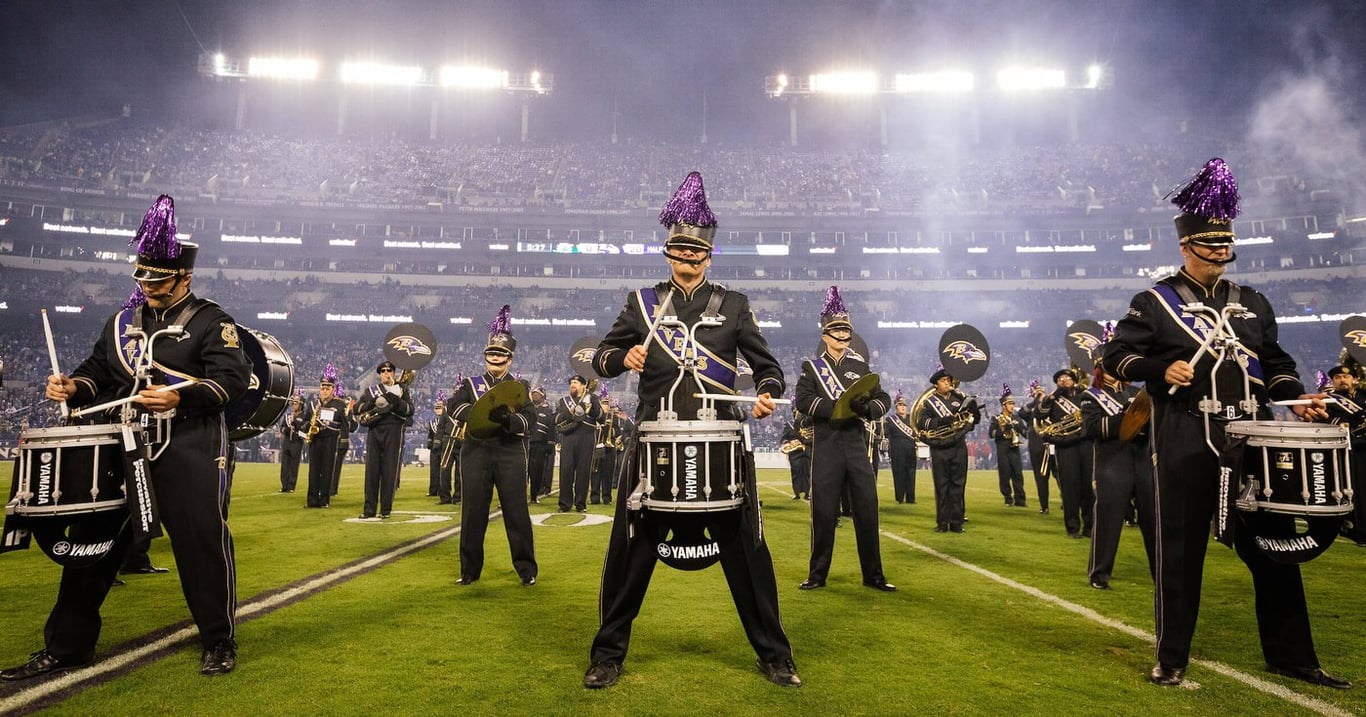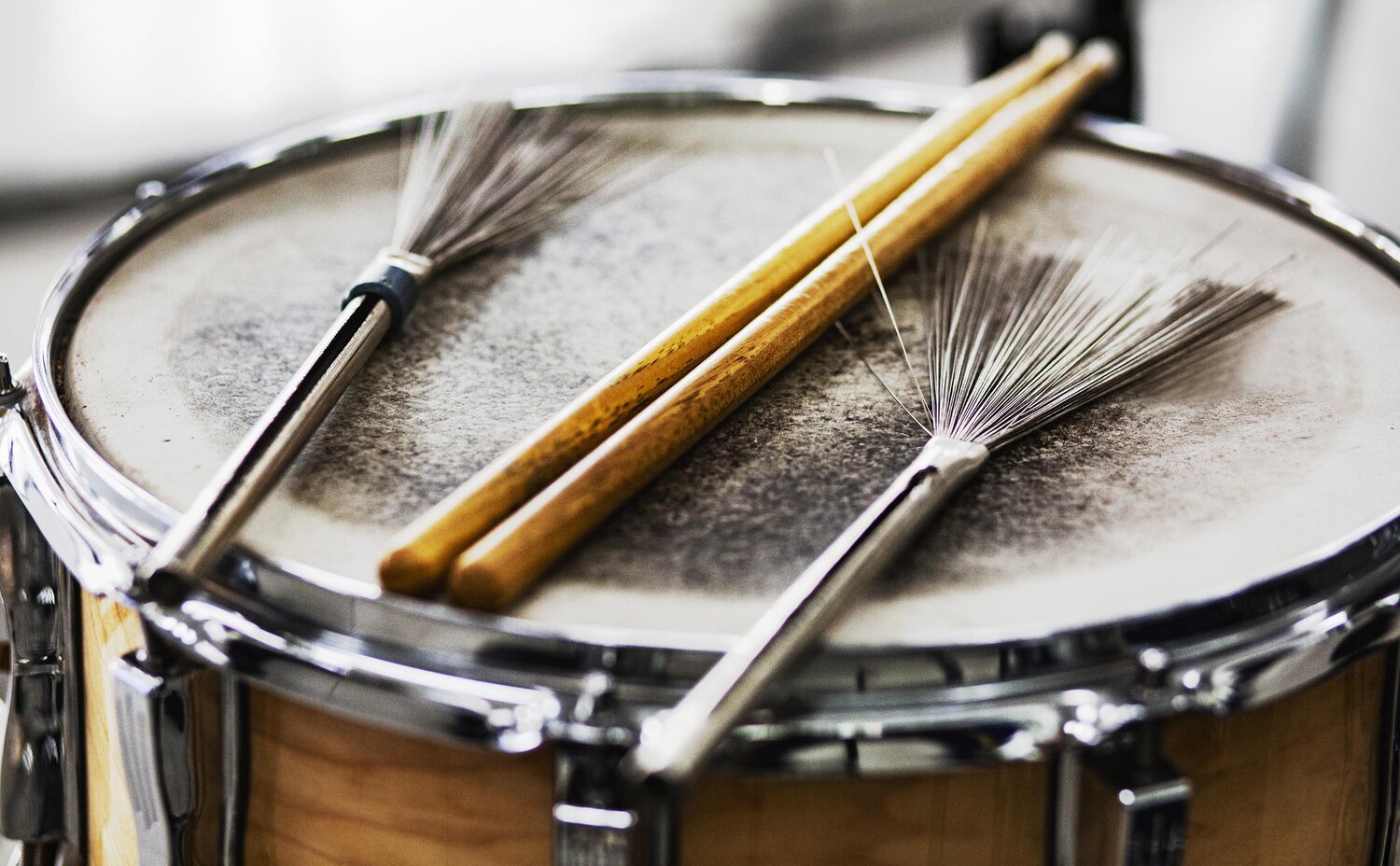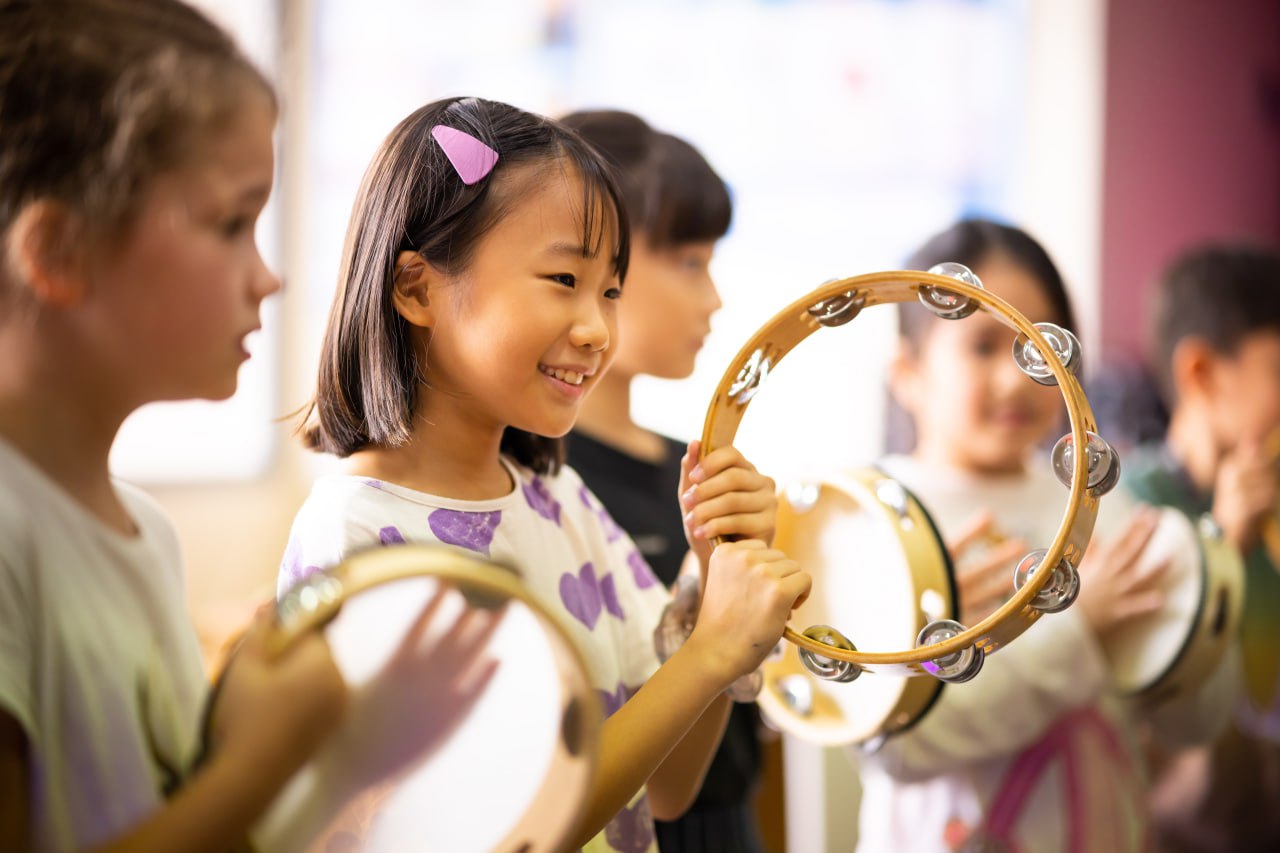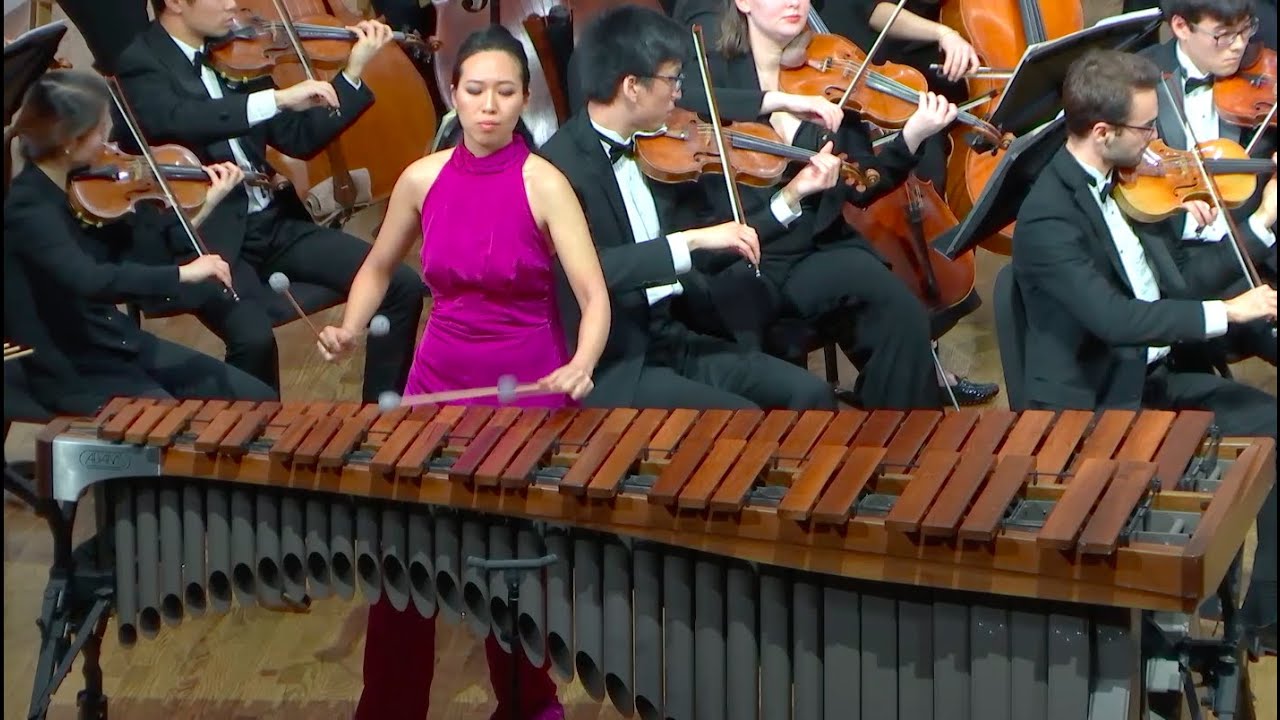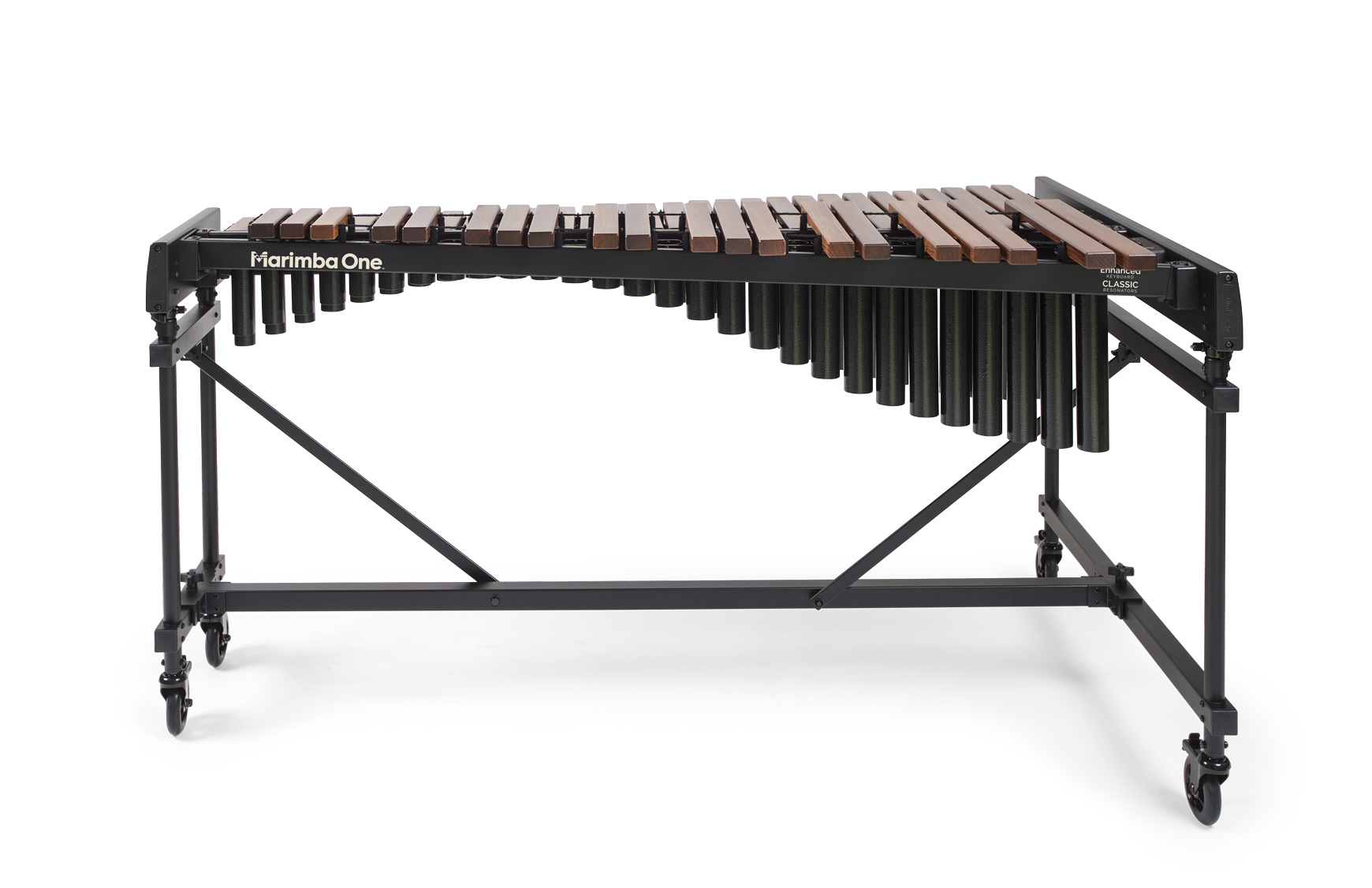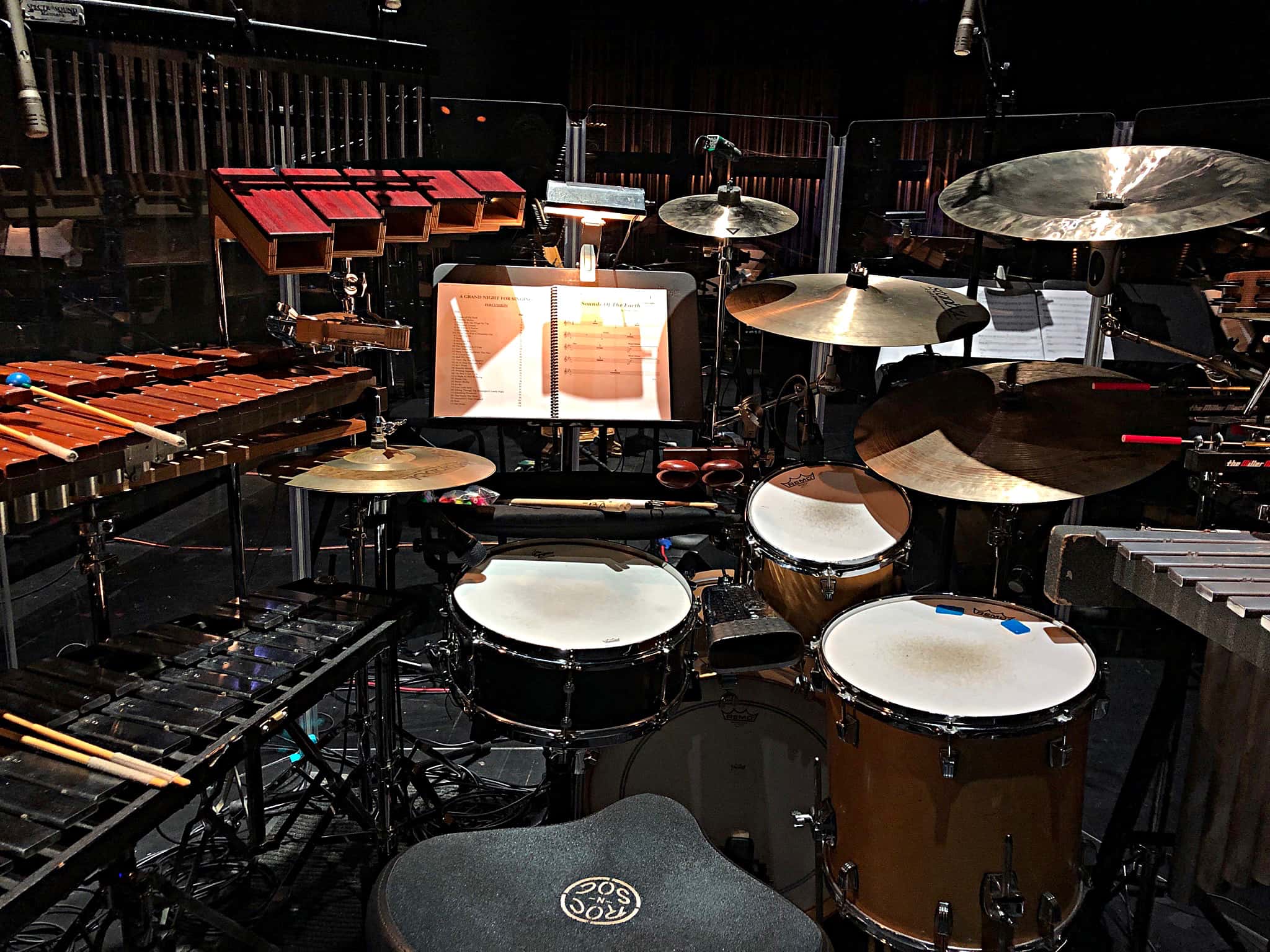Home>Instruments>Percussion Instruments>What Types Of Percussion Instruments Are There


Percussion Instruments
What Types Of Percussion Instruments Are There
Modified: January 22, 2024
Discover the wide array of percussion instruments available, including drums, maracas, tambourines, and more. Learn about the different types and their unique sounds.
(Many of the links in this article redirect to a specific reviewed product. Your purchase of these products through affiliate links helps to generate commission for AudioLover.com, at no extra cost. Learn more)
Table of Contents
Introduction
Percussion instruments are an integral part of music across cultures and genres. They add rhythm, texture, and depth to musical compositions, making them an essential component of any ensemble or orchestra. Percussion instruments are diverse in nature, ranging from drums and cymbals to tambourines and maracas.
The history of percussion instruments dates back thousands of years, with early civilizations recognizing the power of rhythm and using various objects to create sound. Over time, these instruments have evolved and diversified, now encompassing a wide array of types and styles.
In this article, we will explore the fascinating world of percussion instruments, diving into the different types that exist across different cultures and regions. From African drumming to Latin American rhythms, Indian tabla to Asian gongs, and European orchestral percussion to Middle Eastern darbuka, each percussion instrument has its unique characteristics and cultural significance.
Whether you are a music enthusiast, a musician, or simply curious about the world of percussion, this article will provide you with an insightful overview of the various types of percussion instruments.
African Percussion Instruments
Africa is known for its rich cultural heritage and vibrant music traditions. Percussion instruments play a central role in African music, providing rhythmic foundations and melodic elements. Here are some notable African percussion instruments:
- Djembe: The djembe is a goblet-shaped drum that originates from West Africa, particularly Guinea and Mali. It is played with bare hands and produces a wide range of tones, from deep bass to sharp slaps. The djembe is known for its powerful sound and expressive capabilities, making it a popular instrument in both traditional and contemporary African music.
- Dundun: Also known as the talking drum, the dundun is a tension drum with an hourglass shape. It is played with a stick and produces different pitches by squeezing the drum’s ropes. The dundun is often used to imitate human speech patterns and is integral to West African music and storytelling traditions.
- Shekere: The shekere is a percussion instrument made from a gourd adorned with a net of beads or shells. It is played by shaking or striking the beads, creating a rattling sound. The shekere is commonly used in West African music, and its rhythmic patterns and melodic possibilities make it a versatile instrument.
- Balafon: The balafon is a wooden xylophone that is widely played in West Africa. It consists of wooden keys of varying lengths, arranged on top of gourds or resonators. The balafon is played by striking the keys with mallets, producing melodic and percussive sounds. It is often accompanied by drums and is central to the music and cultural traditions of the Mandinka people.
- Kora: The kora is a unique instrument that combines elements of a harp and a lute. It has a large gourd body, a long neck, and 21 strings. The player plucks the strings with their thumbs and index fingers while using their other fingers to vibrate the strings for melodic embellishments. The kora is commonly associated with Griot traditions and is used to accompany storytelling and praise singing in West Africa.
These are just a few examples of the vibrant and diverse percussion instruments found in African music. Each instrument has its unmistakable sound and carries a deep cultural significance, contributing to the rhythmic tapestry of African musical traditions.
Latin Percussion Instruments
Latin music is known for its infectious rhythms and vibrant melodies, and percussion instruments play a vital role in creating the rhythmic foundation of this genre. From the lively beats of salsa to the syncopated rhythms of samba, Latin percussion instruments add a distinct flavor to the music. Here are some popular Latin percussion instruments:
- Bongos: Bongos are a pair of small, open-bottomed drums that are played with the hands. The player strikes the drums using their fingers and palms to produce various tones. Bongos are a staple in Latin music, particularly in Afro-Cuban genres like salsa and son.
- Congas: Congas are tall, narrow, single-headed drums that are played with the hands. They come in different sizes, each producing a different pitch. Congas are widely used in Afro-Cuban and Latin jazz music, adding depth and syncopation to the rhythm section.
- Timbales: Timbales are shallow single-headed drums that originated in Cuba. They are played with sticks and produce a crisp, metallic sound. Timbales are commonly used in Latin orchestras and Latin jazz, providing sharp accents and intricate patterns.
- Maracas: Maracas are percussion instruments consisting of hollow gourds filled with seeds or beads. They are shaken to create a rhythmic, shaking sound. Maracas are prevalent in various Latin American musical genres, including salsa, merengue, and cumbia.
- Claves: Claves are a pair of wooden sticks that are struck together to produce a sharp, percussive sound. They have played a significant role in Afro-Cuban music, serving as a rhythmic guide for other instruments and dancers.
These are just a few examples of the rich assortment of Latin percussion instruments. Each instrument brings its unique texture and rhythm to Latin music, playing a crucial role in capturing the energetic and infectious spirit of this genre.
Indian Percussion Instruments
India is renowned for its rich musical traditions, with percussion instruments holding a significant place in Indian classical and folk music. These instruments provide a rhythmic foundation and add intricate patterns to the melodies. Let’s explore some popular Indian percussion instruments:
- Tabla: The tabla is a pair of hand drums consisting of a small drum (dayan) and a larger drum (bayan). They are made of wood and are played with the fingers and palms. The tabla is the most iconic percussion instrument in Indian classical music and offers a wide range of rhythmic possibilities.
- Pakhawaj: The pakhawaj is a barrel-shaped double-headed drum known for its deep and resonant sound. It is traditionally used in North Indian classical music, particularly in performances of dhrupad. The pakhawaj is played with the hands and is characterized by its rich tonal variations.
- Ghatam: The ghatam is a clay pot used as a percussion instrument. It has a narrow mouth and a wide base and is played by striking or tapping the surface with the hands. The ghatam is commonly used in South Indian classical music and brings a unique earthy tone to the compositions.
- Mridangam: The mridangam is a versatile double-headed drum from South India. It is made of wood and has a cylindrical shape. The mridangam is played with the hands and produces distinct tonal variations based on the finger positioning on the drumheads. It is an essential instrument in Carnatic classical music.
- Ghungroo: Ghungroo is a set of small bells tied together on a string or leather strap. They are worn around the ankles of dancers and produce rhythmic jingling sounds as the dancer moves. Ghungroo adds a percussive element to classical Indian dance forms like Kathak and Bharatanatyam.
These are just a few examples of the mesmerizing Indian percussion instruments. Each instrument has its unique sound and role in Indian classical and folk music, adding depth and complexity to the compositions.
Middle Eastern Percussion Instruments
The Middle East is home to a rich and diverse musical heritage, with percussion instruments playing a prominent role in shaping the region’s distinct sound. These instruments often accompany traditional dances, ceremonies, and celebrations. Let’s explore some notable Middle Eastern percussion instruments:
- Darbuka: The darbuka is a goblet-shaped drum made of clay, metal, or wood. It has a thin drumhead that is played with the hands and fingers. The darbuka is prevalent in Middle Eastern music, particularly in countries like Egypt, Turkey, and Lebanon. Its versatile sound and expressive capabilities make it a beloved instrument.
- Doumbek: The doumbek, also known as the goblet drum, is similar to the darbuka but has a different shape and construction. It is widely used in Arabic, Turkish, and Persian music, as well as in belly dance performances. The doumbek produces a wide range of sounds, from deep bass tones to sharp and percussive pops.
- Riq: The riq is a tambourine-like instrument with small cymbals attached to its frame. It is played by shaking, striking, or tapping the drumhead and cymbals. The riq is commonly used in Middle Eastern music, adding intricate rhythms and embellishments to ensembles and solo performances.
- Zills: Zills, also known as finger cymbals, are small metal disks that are worn on the thumbs and middle fingers. They are struck together to create a shimmering and rhythmic sound. Zills are an integral part of belly dance performances and are also used in various Middle Eastern folk and classical music traditions.
- Sagat: Sagat, or finger cymbals, are similar to zills but are usually larger and have a deeper tone. They are played by striking the metal disks together or against another surface to create a distinctive ringing sound. Sagat are commonly used in Egyptian and Levantine music, adding a captivating metallic element to the music.
These are just a few examples of the enchanting Middle Eastern percussion instruments. Each instrument carries its own unique cultural significance, and their rhythmic patterns and melodic possibilities make them essential elements in Middle Eastern music and cultural traditions.
Asian Percussion Instruments
Asia is a continent rich in cultural diversity, with each region having its unique musical traditions and percussion instruments. From the powerful sounds of taiko drums in Japan to the delicate chimes of the gamelan in Indonesia, percussion instruments in Asia play a diverse range of roles. Let’s explore some notable Asian percussion instruments:
- Taiko Drums: Taiko drums are large drums with a deep and resonant sound. They are often played in ensembles and performances in Japan. Taiko drumming is known for its powerful, energetic rhythms, and the drums are played with sticks or bare hands, producing thunderous beats that captivate listeners.
- Gamelan: The gamelan is an Indonesian ensemble made up of various instruments, including metallophones, gongs, and drums. The percussion instruments in the gamelan produce intricate melodic and rhythmic patterns that blend harmoniously together. Gamelan music is traditionally played in ceremonies, rituals, and traditional performances in Indonesia.
- Dhol: The dhol is a double-headed drum commonly used in South Asian music, particularly in Punjabi folk music. It is played with sticks and produces a lively and energetic sound that is often accompanied by traditional dance forms such as bhangra. The dhol is known for its rhythm and groove and is a popular instrument in celebratory events.
- Angklung: The angklung is an Indonesian instrument made of bamboo tubes attached to a frame. It is played by shaking or tapping the tubes, producing a melodic and harmonious sound. The angklung is often used in traditional Indonesian music and is considered a cultural symbol of Indonesia.
- Taiko: The taiko is a traditional drum from Korea. It is played with sticks and is known for its deep, resonant sound. Taiko drums are often used in traditional Korean music and performances, creating a captivating rhythmic foundation.
These are just a few examples of the diverse and captivating percussion instruments found in Asia. Each instrument carries its own rich cultural heritage and adds a distinct flavor to the music of the region.
European Percussion Instruments
European music has a long and storied history, and percussion instruments have played a significant role in various genres and styles. From classical orchestral compositions to folk music traditions, European percussion instruments add texture and rhythm to the musical landscape. Let’s explore some notable European percussion instruments:
- Timpani: Timpani, also known as kettle drums, are large drums with a rounded shape. They are played with mallets and are a crucial component of orchestral music. Timpani produce deep, resonant tones and are used to provide powerful accents and dramatic effects in orchestral compositions.
- Snare Drum: The snare drum is a versatile percussion instrument commonly used in military bands, orchestras, and various genres of music. It consists of a shallow drum with snares stretched across the bottom head, which creates a buzzing or rattling sound. The snare drum adds crisp, rhythmic patterns and dynamic accents to musical compositions.
- Xylophone: The xylophone is a percussion instrument with wooden bars of different lengths, arranged in the shape of a keyboard. It is played by striking the bars with mallets, producing melodic tones. Xylophones are used in both classical and contemporary music and are known for their clarinet-like timbre and bright, resonant sound.
- Marimba: The marimba is a larger version of the xylophone with resonators underneath the bars. It produces warm, resonant tones and is played with mallets. The marimba is widely used in orchestras, jazz ensembles, and as a solo instrument, showcasing its rich harmonics and expressive potential.
- Cymbals: Cymbals are metal percussion instruments that produce a crashing or shimmering sound when struck together. They are commonly used in orchestras, marching bands, and rock music. Cymbals come in various sizes and types, each producing a different tone and character.
These are just a few examples of the diverse and iconic percussion instruments found in European music. Each instrument brings its unique qualities and adds depth and color to the compositions, showcasing the rich musical heritage of the continent.
Other Percussion Instruments
In addition to the well-known percussion instruments discussed earlier, there are numerous other unique and fascinating percussion instruments from around the world. These instruments may have a specific cultural significance or can be found in niche musical genres. Let’s explore some of these intriguing percussion instruments:
- Hang Drum: The hang drum, also called the handpan, is a relatively modern percussion instrument that originated in Switzerland. It is a metal drum with a unique UFO-like shape, featuring tuned metal notes on the surface. The hang drum is played with the hands, creating ethereal and soothing sounds.
- Bodhrán: The bodhrán is a traditional Irish frame drum made of wood and animal skin. It is played with a wooden beater called a tipper. The bodhrán is a versatile instrument used in Irish folk music and adds rhythm and depth to traditional jigs, reels, and other lively dance tunes.
- Kalimba: The kalimba, also known as the thumb piano, is a small handheld instrument originating from Africa. It consists of metal or wooden keys mounted on a resonating box. The kalimba is played by plucking the keys with the thumbs, producing enchanting melodies and soothing tones.
- Cajón: The cajón is a percussion instrument that originated in Peru. It is a box-shaped drum made of wood, with a sound hole on the back. The player sits on the cajón and taps, slaps, and brushes the front surface with their hands to create a variety of tones and rhythms. The cajón is now an integral part of Latin American and flamenco music.
- Steel Pan: The steel pan, also known as the steel drum, is a percussion instrument developed in Trinidad and Tobago. It is made from large oil barrels that are tuned and shaped to create different tones. The steel pan is played by striking the metal surface with rubber-tipped mallets. It is often associated with Caribbean music and evokes a tropical and joyful vibe.
These are just a few examples of the wide range of other percussion instruments available. Each instrument has its own distinct sound and cultural significance, contributing to the global mosaic of percussion music.
Conclusion
Percussion instruments are a universal language that spans cultures and genres, enriching music with their rhythms, textures, and vibrant tones. From the thunderous beats of African drums to the intricate patterns of Indian tabla, from the energetic Latin rhythms to the melodic chimes of Asian instruments, percussion instruments have a profound impact on the musical landscape worldwide.
Each percussion instrument carries a unique cultural significance, reflecting the traditions and history of its respective region. They have been used for centuries in ceremonies, celebrations, and storytelling, connecting people and communities through the power of rhythm.
Whether you’re captivated by the explosive sounds of drums or the delicate melodies of xylophones, exploring the world of percussion instruments is an exciting and enriching journey. Understanding the different types of percussion instruments allows us to appreciate the intricate craftsmanship, cultural heritage, and artistic expressions embedded within them.
Whether you’re a musician, music lover, or simply curious about different cultures, exploring the wide array of percussion instruments will open your ears to new and captivating sounds. So, take a rhythmic adventure and explore the fascinating world of percussion instruments from around the globe.


